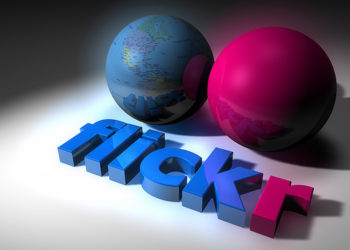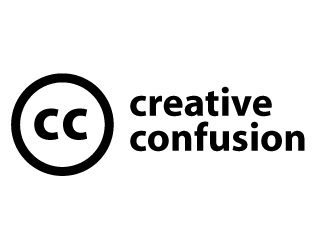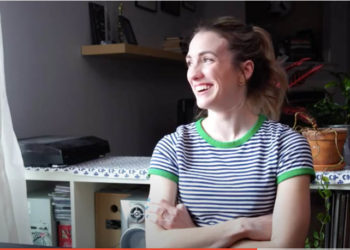Back in 2017, I penned a post for The Scholarly Kitchen entitled “The Value of Copyright: A Publisher’s Perspective“. We are now in 2020, hunkering down in isolation, working remotely. As we ride out these difficult times, we can’t help but look ahead and consider what a post-COVID-19 publishing landscape will look like. In this article, I want to revisit the history of copyright, steering into Creative Commons Licensing, and weigh the value of protection and reuse in light of an inexorable push towards global openness. There is value in publishing in an open setting, but do we fully understand how openness will stimulate or hinder creation and expression of ideas? Publishers, and indeed all players in the publishing ecosystem, have not moved far in helping our communities understand the rights and licensing landscape. On the one hand, authors are mainly concerned with disseminating their research and doing so in a way that maximizes use and citation. On the other hand, authors be they authors of journal articles or books, may find their content repurposed in ways they did not expect by publishers they did not sign on with. I am deliberately not stepping into the treacherous waters of whether publishers pay royalties for differing kinds of content to authors. The issue I address is how to equip authors to be able to ask the right questions, and sign up to be published knowing how their content will be treated. An author’s bandwidth to consider complexities of licensing and rights associated with their publishing output is limited. However, it is important that authors grapple with such complexities, as their ability to create may rest on being able to navigate the right path for publicizing their research and communicating their ideas.

Copyright law is complex and varies greatly across countries – one of the main reasons that authors do not grapple with its complexities. Here I am referring specifically to American copyright law, though of course such law was established when the printing press was introduced to England in the late fifteenth century. Printing presses were firmly in control, and the Licensing Act of 1662 cemented what was effectively their ability to censor publications. By 1710, England’s parliament enacted the Statute of Anne, which established principles of how authors may own rights to their work – copyright. It set a fixed term of 14 years for protection of an author’s work, which could be renewed if the author was still alive when the first 14-year period expired. Copyright law continued to evolve, although you will no doubt be grateful that I will spare you the details of all of its extensions.
However, some key innovations are worth examining. For example, the Berne Convention, which came into being in 1886 and was signed by the US in 1989. The notion was to place the US approach to copyright in context of a broader international approach. Effectively, it recognized that there is a myriad of approaches to copyright laws across the world, which to this day confuses authors and publishers alike, given the global nature of research.
Copyright case law is convoluted: hundreds of important cases up to the present day further refine copyright law. One significant American law is the US Copyright Act of 1976, which substantially revised the Copyright Act of 1909 and essentially provided protection for all authors’ works between 1978 and the present day. Why does this matter? Well, it was the first real recognition that an individual’s work is worth something and needs to be protected, steering away from bookseller and printer monopolies.
A question we have not addressed is, why develop copyright at all? The notion behind copyright law is that authors are more able to express their creative ideas in the arts and sciences if they are protected through ownership of their work, by establishing rights that prevent unauthorized use of content. Too few people recognize that academic product – that is, ideas and knowledge – is the result of considerable hard work, work that should be recognized through attribution at least. An author can look to copyright law to help prevent others from re-purposing their work inappropriately, or altering it to say something different and republishing it under their name. Copyright protects the integrity of the research. This is a primary concern for humanities authors, where the argument is the result. They don’t want anyone else changing their carefully chosen words.
This, in turn, allows authors to benefit financially from publishing their work. I do find this notion appealing, and I sense that in the rush to demonize copyright law in the publishing industry, it is often easy to forget that copyright is indeed in force to protect authors themselves, not so much the publishers.
Let’s fast forward to the present day and take a look at how we have evolved into a world where Creative Commons Licensing is the new normal. Creative Commons Licenses were a successful venture into allowing authors to retain copyright, and allow for publication of their work through licenses that allow for reuse. These licenses come in a variety of flavors and courtesy of the Creative Commons organization, I list them here in their full complex glory, with Creative Commons’ short summary descriptions:
Attribution: CC BY
This license lets others distribute, remix, adapt, and build upon your work, even commercially, as long as they credit you for the original creation. This is the most accommodating of licenses offered. Recommended for maximum dissemination and use of licensed materials.
Attribution-ShareAlike: CC BY-SA
This license lets others remix, adapt, and build upon your work even for commercial purposes, as long as they credit you and license their new creations under the identical terms. This license is often compared to “copyleft” free and open source software licenses. All new works based on yours will carry the same license, so any derivatives will also allow commercial use. This is the license used by Wikipedia, and is recommended for materials that would benefit from incorporating content from Wikipedia and similarly licensed projects.
Attribution-NoDerivs: CC BY-ND
This license lets others reuse the work for any purpose, including commercially; however, it cannot be shared with others in adapted form, and credit must be provided to you.
Attribution-NonCommercial: CC BY-NC
This license lets others remix, adapt, and build upon your work non-commercially, and although their new works must also acknowledge you and be non-commercial, they don’t have to license their derivative works on the same terms.
Attribution-NonCommercial-ShareAlike: CC BY-NC-SA
This license lets others remix, adapt, and build upon your work non-commercially, as long as they credit you and license their new creations under the identical terms.
Attribution-NonCommercial-NoDerivs: CC BY-NC-ND
This license is the most restrictive of our six main licenses, only allowing others to download your works and share them with others as long as they credit you, but they can’t change them in any way or use them commercially.
What are the pros and cons for authors thinking about using Creative Commons Licenses? Advantages to Creative Commons Licenses lie mainly in the open nature of an author’s content, with the license allowing for reuse under conditions set by the license used. The con to using these licenses is in the lack of control an author may have over their content. A reuse of content can’t be revoked under a Creative Commons License once granted – unlike removing copyright permissions. Also, authors need to be very careful about which license they use. If an author is adamant that they do not want their work used by another party to make money, then they need to know to use CC BY-NC. If an author does not want their work to be the basis of a derivative work then ND comes into play and so on. Even with CC BY, where all that is asked is correct attribution in reuse, who amongst our authors knows how to follow up on abuses – and abuses are common. Even if attribution is given, an author may not initially realize to what use their content may be put. For examples of this you can turn to Rick Anderson’s excellent article of 2014 entitled CC-BY, Copyright and Stolen Advocacy, For example:
Last year we saw a troubling (if far less repugnant) example of how something like this can happen in the academic realm. Apple Academics Press published a book titled Epigenetics, Environment, and Genes. The book was comprised almost entirely of articles taken, without their authors’ permission, from OA journals in which they had been published under CC-BY licenses. It is now being sold on Amazon for just over $100. Although members of the scholarly community have responded with outrage, Apple Academic Press has done nothing illegal or even unethical. As long as the authors of the articles are given due credit, this kind of reuse is one of the many that are explicitly allowed under CC-BY terms. If the authors feel mistreated by Apple Academic, it’s because they failed to read (or understand) the agreements they signed when they submitted their articles for publication in OA outlets.
Joe Esposito pointed out in his article of 2019, entitled “Internal Contradictions with Open Access Books“, that publishers themselves do not always understand, or compute the implications of a CC BY license, and can get quite upset when content they have published is reused quite legally.
An author essentially has to ask themselves how important control is to them when publishing their content. As it stands, publishers, and in fact all stakeholders in the publishing ecosystem, do a poor job of explaining how to navigate these questions.
The issue for many authors here is that publishers, institutions, and funders are not making it clear what their licensing and copyright expectations are of authors. A journal may require copyright transfer, but an author’s institution may require use of a Creative Commons License. How does an author resolve such a quandary? (If, indeed, they are even aware of it?) Publishers perhaps are not helping here, as we do very little to explain how rights issues may affect authors as they publish their content. An author deserves to be able to make an informed choice to publish based on the rights they want associated with their content, and to do that they need help understanding their rights.
Further Reading:
CC-Bye Bye! Some Consequences of Unfettered Reproduction Rights Become Clearer – Phil Davis, Scholarly Kitchen 2013
Creative Commons Confusion Continues to Confound Content Creators – David Crotty, Scholarly Kitchen 2014
More Creative Commons Confusion: When Does NC Really Mean “Non-Commercial”? – David Crotty, Scholarly Kitchen 2015
Discussion
8 Thoughts on "Copyright, Creative Commons, and Confusion"
Excellent and helpful overview, and one I will share with colleagues. Thank you.
Excellent. I would suggest that this article accompany all contracts and that the contracts be so designed that an author pens in which copyright s/he desires.
Lastly, should the author desire to have a work copyright under their name then it should be explained that it is the responsibility of the author to protect the copyright and if fails to do so that the publisher has the right to seek damages in light of such failure.
Thanks Robert for a good article.
Your comment “An author’s bandwidth to consider complexities of licensing and rights associated with their publishing output is limited” is probably best reflected in Lizzy Gadd’s excellent 2017 “Guest Post — Academics and Copyright Ownership: Ignorant, Confused or Misled?” https://scholarlykitchen.sspnet.org/2017/10/31/guest-post-academics-copyright-ownership-ignorant-confused-misled/
As per my series of tweets on this https://twitter.com/dannykay68/status/1252339889703550977:
Your article asks the question “…who amongst our authors knows how to follow up on abuses – and abuses are common”. I have my own issues with CC but generally support it. What I want to know is whether there is any quantification on this kind of statement. How ‘common’ are these abuses? And then I ask the reverse question. How common are copyright abuses when the work has ‘all rights reserved’? In my work experience it appears to be something that does happen often. The difference between the two is whether there is an option for reparation. And then I ask, does having the *option* for reparation translate into actual *action*? In theory, when authors sign their copyright to a publisher this is for their ‘protection’. And publishers in theory will defend the copyright. I’m sure some do. But when I have asked for examples of this from publishers in various public forums discussing copyright no-one has been able to provide a response – but that’s a flawed research method! Regardless, the copyright being defended is a commercial issue one suspects (through copyright transfer agreements the commercial ownership of academics works usually sit with the publisher) – and the arguments about CC abuses are focused on damage to the author, particularly reputational. The point being: It is tiring to have initiatives such as CC or open access monographs held up to some imaginary high standard that is not necessarily met by the traditional methods of doing the task – all rights reserved, or traditional monograph publishing as two examples.
The issue of who polices copyright infringement is a bigger issue in books than articles. Book publishers proceed against whom they perceive to be copyright violators all the time. Your point is well taken: Don’t hold OA to a higher standard than traditional publishing, but in books the actual practices are very different.
Please check your facts. The US lagged behind considerably when joining the Berne Convention, and did not enter the Berne Convention until 1988 – not 1888 as you have suggested. The Berne convention wasn’t ratified in the US until 1989.
For the CC-BY_SA license. You incorrectly indicate that
“their new creations under the identical terms. “
This is incorrect. That is not what the license deed indicates – it indicates that the license must be similar or compatible – not identical.
“If you alter, transform, or build upon this work, you may distribute the resulting work only under the same, similar or a compatible license.” Source:
Hi Robert, thanks for this article. I just have three comments.
Rick Anderson says:
“The book was comprised almost entirely of articles taken, without their authors’ permission, from OA journals in which they had been published under CC-BY licenses.”
The problem is that that’s a misunderstanding. They did have the authors’ permission, granted by the CC BY. And that’s what basically CC licenses do: they give permission in advance.
Additionally, if the authors are being funded by a public institution, I don’t see what’s the problem with someone else making money out of those articles. What’s the whole purpose of financing science with tax dollars if then a small publisher can’t make money out of it? Or is it Elsevier the only one allowed to strip off authors and libraries? This sounds like a double standard case to me. It might be the case, as well, that the compilation is actually bringing some value – for example putting together a set of articles that wouldn’t be together to begin with.
Lastly, it would be good to see more of the good cases showing up. For example, there’s a great publisher called Intechopen that publish a vast amount of literature under a CC BY. Some of them are very good survey literature books — and I’ve been able to translate some of that content into Wikipedia articles, since the license allows to do so. So it would be good to counterbalance those “horror stories” about how someone made some bucks selling some books on Amazon with other stories that are also about the value of sharing.
I say this because then we have a lot of academics putting CC BY NC ND and severely limiting re-use possibilities, when there’s a case to be made around who is paying for that research to happen, how, and how science should be a social good.
cheers,
Rick Anderson says:
“The book was comprised almost entirely of articles taken, without their authors’ permission, from OA journals in which they had been published under CC-BY licenses.”The problem is that that’s a misunderstanding. They did have the authors’ permission, granted by the CC BY. And that’s what basically CC licenses do: they give permission in advance.
It’s not a misunderstanding; I understand this principle perfectly well. If you read the full piece to which Robert linked, you’ll see that I went on to say the following:
“Although members of the scholarly community have responded with outrage, Apple Academic Press has done nothing illegal or even unethical. As long as the authors of the articles are given due credit, this kind of reuse is one of the many that are explicitly allowed under CC-BY terms. If the authors feel mistreated by Apple Academic, it’s because they failed to read (or understand) the agreements they signed when they submitted their articles for publication in OA outlets.”
It’s a matter of fact that the authors’ material was reused without permission — precisely because, as you (and I) point out, permission requests in specific reuse cases are made unnecessary by the CC BY license.


